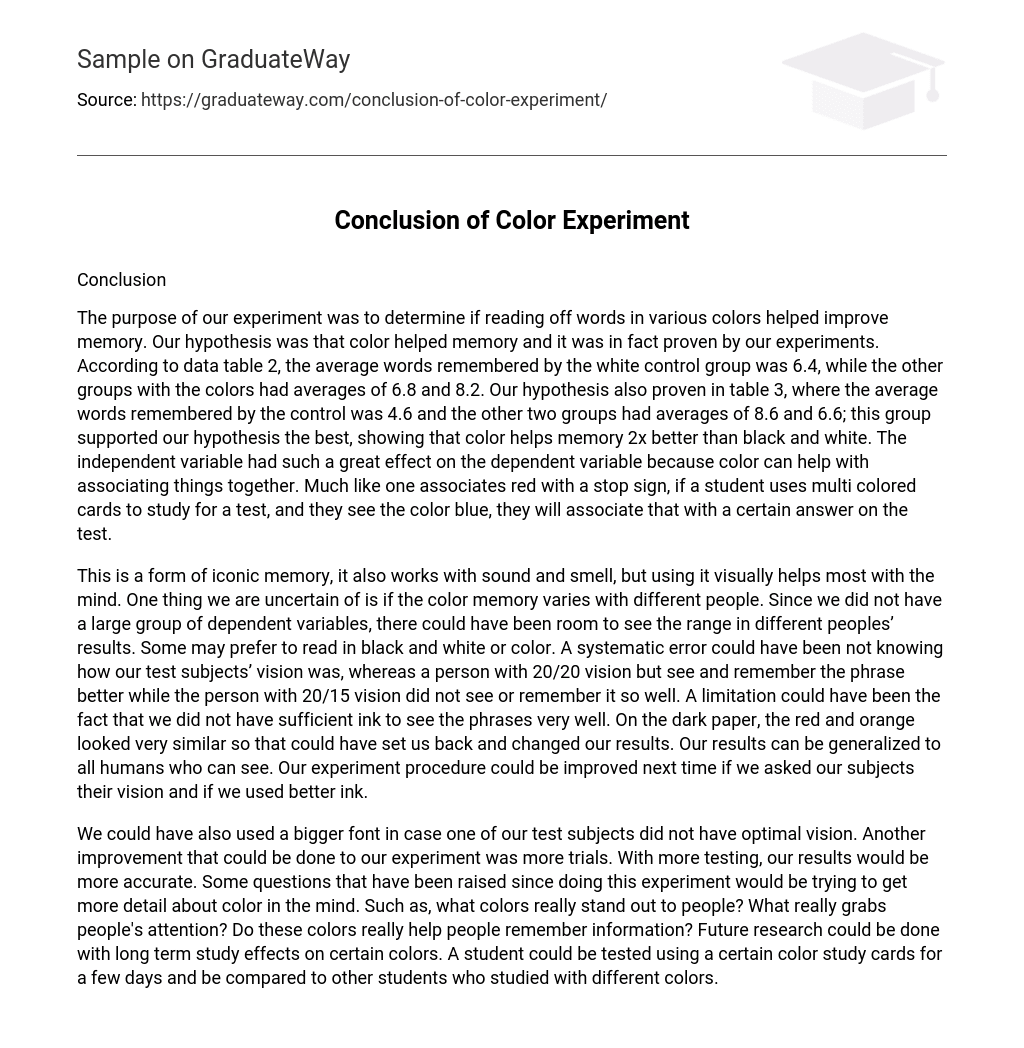Conclusion
The purpose of our experiment was to determine if reading off words in various colors helped improve memory. Our hypothesis was that color helped memory and it was in fact proven by our experiments. According to data table 2, the average words remembered by the white control group was 6.4, while the other groups with the colors had averages of 6.8 and 8.2. Our hypothesis also proven in table 3, where the average words remembered by the control was 4.6 and the other two groups had averages of 8.6 and 6.6; this group supported our hypothesis the best, showing that color helps memory 2x better than black and white. The independent variable had such a great effect on the dependent variable because color can help with associating things together. Much like one associates red with a stop sign, if a student uses multi colored cards to study for a test, and they see the color blue, they will associate that with a certain answer on the test.
This is a form of iconic memory, it also works with sound and smell, but using it visually helps most with the mind. One thing we are uncertain of is if the color memory varies with different people. Since we did not have a large group of dependent variables, there could have been room to see the range in different peoples’ results. Some may prefer to read in black and white or color. A systematic error could have been not knowing how our test subjects’ vision was, whereas a person with 20/20 vision but see and remember the phrase better while the person with 20/15 vision did not see or remember it so well. A limitation could have been the fact that we did not have sufficient ink to see the phrases very well. On the dark paper, the red and orange looked very similar so that could have set us back and changed our results. Our results can be generalized to all humans who can see. Our experiment procedure could be improved next time if we asked our subjects their vision and if we used better ink.
We could have also used a bigger font in case one of our test subjects did not have optimal vision. Another improvement that could be done to our experiment was more trials. With more testing, our results would be more accurate. Some questions that have been raised since doing this experiment would be trying to get more detail about color in the mind. Such as, what colors really stand out to people? What really grabs people’s attention? Do these colors really help people remember information? Future research could be done with long term study effects on certain colors. A student could be tested using a certain color study cards for a few days and be compared to other students who studied with different colors.





